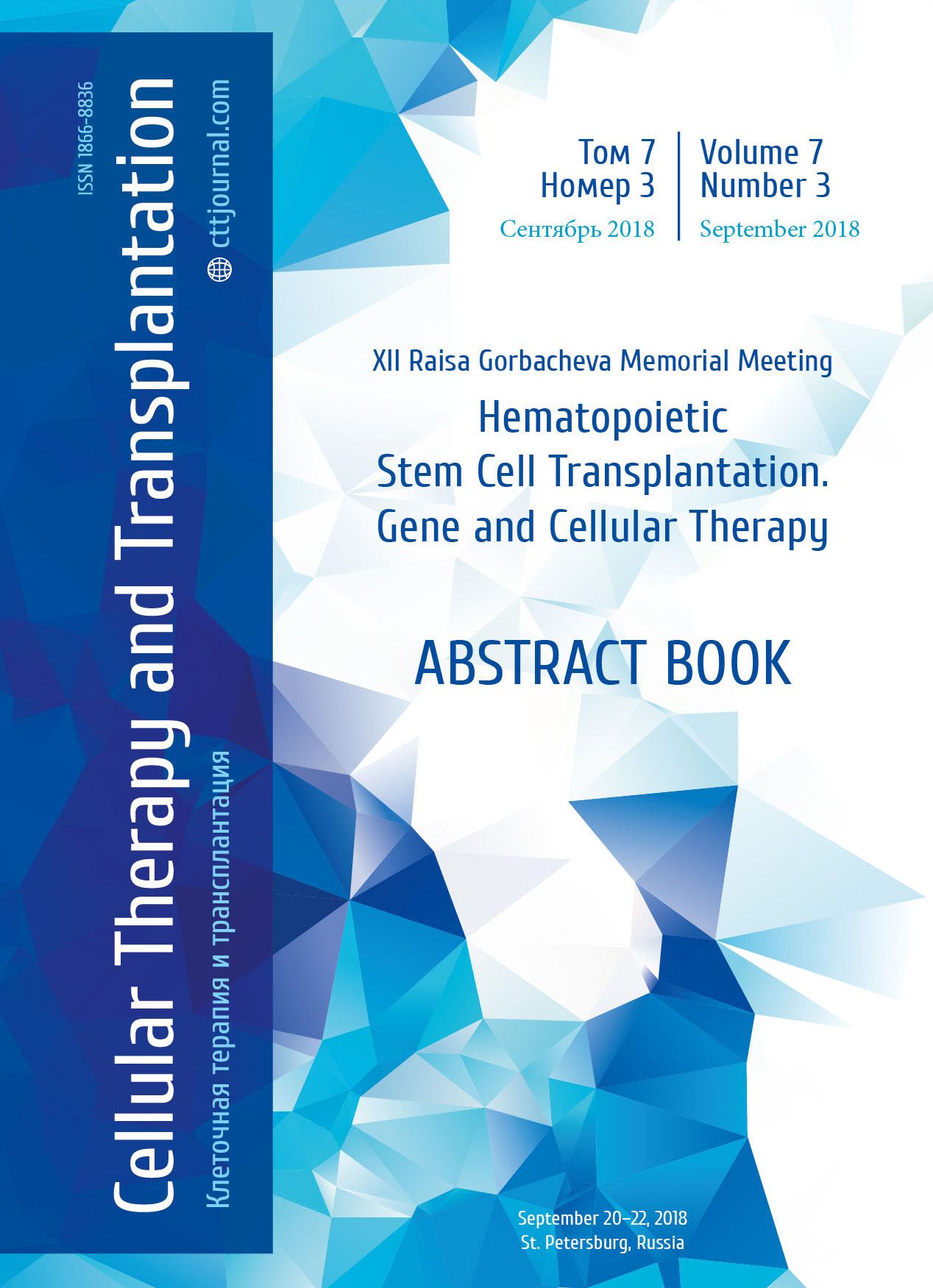High-dose chemotherapy followed by autologous hematopoietic stem cell transplantation for HIV-related lymphomas: the results of a prospective case-control study
Summary
Introduction
Infection with human immunodeficiency virus (HIV) is associated with a significantly increased risk of cancer, including Hodgkin lymphoma (HL) and non-Hodgkin lymphoma (NHL), even when patients are treated successfully with contemporary antiretroviral therapy [1]. Widespread use of the antiretroviral therapy (ART) has changed the approach to treatment of the HIV-related lymphomas, allowing the use of aggressive therapy including high-dose chemotherapy (HDC) followed by autologous hematopoietic stem cell transplantation (ASCT) [2]. The outcome of ASCT for HIV-related lymphomas is still a subject for controversy. The number of a prospective case-control studies where estimated safety and efficiency of ASCT procedure is limited.
Patients and methods
From January 2016 to March 2018, ten patients with HIV-related lymphoma who underwent HDC followed by ASCT were included into a prospective study (study HIV-infected group, n=10). To compare the efficacy and safety of the procedure, a “case-control” method (1:4) have been applied. The comparison group consisted of non-HIV-infected patients with lymphoma comparable for basic characteristics patients, who have undergone ASCT at the same period of time (control group, n=40). Median follow-up time was 8 (1- 28) months for both groups. The primary endpoint of the study was to estimate overall survival (OS) at 18 months after ASCT, time of hematopoietic recovery and toxicity according to Common Terminology Criteria for Adverse Events 4.0 (CTCAE). Secondary endpoints included relapse rate calculated by time to progression (TTP) and progression free survival (PFS) at 18 months after ASCT. Four patients of control group with HL who was treated with brentuximab vedotin after ASCT were excluded from the TTP and PFS analyses. The underlying diseases in HIV-group were: HL (n=6; 60%), NHL (n=4; 40%); in control group: HL (n=29; 72.5 %), and NHL (n=11; 27.5%). HIV status in study group at the moment of transplantation showed undetectable HIV viral load (<50 copies/mL) in all patients; the median CD4+ cell number was 473 (210-715) cells/μL, and all the patients received ART.
Results
Overall survival (OS) at 18 months after ASCT for the entire patient group (n=50) was 88%: in the HIV-group, 90% versus 87.5% in control group (p=0.605). The median terms for recovery of leukocytes, neutrophils, and platelets were D+14, D+17, D+20 in HIV-group and D+14, D+16, D+19 in control group, respectively. Toxicity rates, according to CTCAE are shown in Table 1. Relapse incidence of the underlying disease at 18 months after ASCT was 20%, with the median TTP of 3 months (2-4) in HIV-group, and 11.1% with median TTP value of 8.5 months (3-11) in control group (р=0.645). Progression-free survival at 18 months after ASCT was 76.1% (n=46): in HIV-group, 70% versus 77.8% in control group (p=0.892). There were no differences revealed in the subgroup analysis for separate HL and NHL cases.
Table 1. Clinical characteristics of HIV-positive and HIV-negative groups

Conclusion
Overall survival at 18 months after HDC followed by ASCT in patients with HIV-related lymphomas was 90%, whereas progression-free survival was 70%, the relapse incidence was 20% with median time to progression 3 months (2-4) and did not differ from the group of patients without HIV infection. We have not found any statistically significant differences between the two groups for hematopoietic recovery
and toxicity rates. The obtained data confirm that ASCT is a safe and efficient procedure for HIV-related lymphomas, as well as for lymphoma patients without HIV.
Keywords
HIV-related lymphoma, HIV, autologous hematopoietic stem cell transplantation, high-dose chemotherapy, overall survival, toxicity, hematopoiesis recovery, HIV status, progression free survival.
References
1. Yanik EL, Napravnik S, Cole SR, Achenbach CJ, Gopal S, Olshan A, et al. Incidence and timing of cancer in HIV-infected individuals following initiation of combination antiretroviral therapy. Clin Infect Dis. 2013; 57: 756–764.
2. Krishnan A, Palmer JM, Zaia JA, Tsai NC, Alvarnas J, Forman SJ. HIV status does not affect the outcome of autologous stem cell transplantation (ASCT) for non-Hodgkin lymphoma (NHL). Biol Blood Marrow Transplantation. 2010; 16(9):1302-1308.


